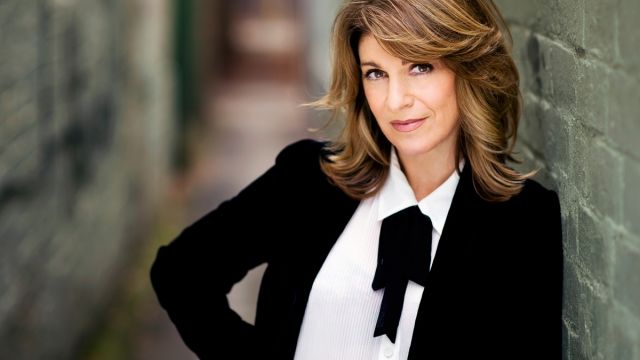Shall We Dance?
Five of our best choreographers talk to Coral Drouyn about what makes them who they are.
As a kid I saw the inimitable Danny Kaye in the movie “White Christmas”, where he sang a song that went:
Chaps,
Who did Taps
Aren’t tapping anymore - they’re doing Choreography!
It helped inspire my lifelong fascination with Choreography.
The five Choreographers I’ve talked to are all favourites of mine, who between them they have won over 50 national and international awards. They are the legendary Graeme Murphy, whose Sydney Dance Company revolutionised contemporary dance; Stephen Page, the creative force behind Bangarra, the acclaimed Indigenous dance company; Kelley Abbey, who won Academy and BAFTA awards for her work on Happy Feet; Andrew Hallsworth, Helpmann winner and Musical Theatre stalwart, and Michael Ralph – the new kid on the block (and a Kiwi to boot) - who only has a handful of musicals under his belt, but already has everyone talking about the originality and freshness of his work.
I put the same questions to all of them, but had to trim down their answers. Dancers, it seems, are as good with words as they are with their feet
So, what makes a great choreographer?
Kelley Abbey: Choreography is such a weird thing. You can’t go anywhere to train to be one. You either choose it or, in my case, it chooses you. On the job I learnt very quickly that it’s not just about making up steps. It’s about creating something that makes music a visual experience
Graeme Murphy: Ooh, a tricky one to start, because I never analyse it for myself. It’s not about the steps; it’s about the ability to tell a story, to touch people. It can be quite simple provided it connects emotionally and makes you feel something; makes you discover something for the first time.
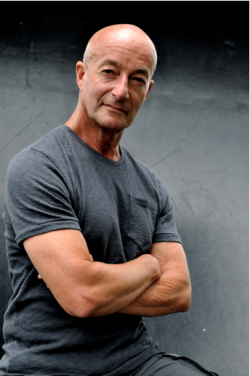
Stephen Page: It’s definitely the storytelling aspect – especially when dealing with our heritage. I don’t like the term choreographer much because I’m really a custodian of culture and vision. But a good base as a dancer never hurts. If I hadn’t worked with Graeme (he was incredibly nurturing), if there hadn’t been an SDC, then there wouldn’t have been a Bangarra, except maybe as a purely educational tool or tourist attraction.
Graeme Murphy: That’s very gracious.
Andrew Hallsworth: For me, and I’m speaking about musicals, it’s someone who plays their part in a team of people that are all aiming for the same outcome and that’s to serve the story. You can’t let ego get in the way, otherwise it all goes to shit!
Michael Ralph: It certainly was all about steps, steps, steps for me in the beginning, but hey, everybody has to start somewhere. But yes, story - and it’s a magical thing, especially in musicals. When the characters can no longer say, or sing, their feelings, they can dance and the audience knows exactly what’s going on.
Who, or what show, was the epiphany for you that made you say “I want to do THAT”?
Graeme Murphy: Well, my first instinct is to say my mother, because I remember her playing the piano right from the time I could walk, but I suppose it was the music. I couldn’t NOT dance. Long before I knew that dancing could be an actual job, I knew I had to do it. Nothing else brings the same feeling. I was choreographing my own moves without even knowing it, so I didn’t draw any line between dancing and choreography. And of course I remember the old movie musicals.
Kelley Abbey: I loved the old musicals – Gene Kelly and Cyd Charisse. They were my inspiration. And Fred Astaire, oh and Michael and Janet Jackson.
Stephen Page: My dad used to bring home old TVs that had no knobs, and he’d use a pair of pliers to turn them on and off. When you’re one of twelve kids, there’s no money for luxuries. The old musicals were great. My mum loved them. So I grew up watching people like The Nicholas Brothers, Fred Astaire and Gene Kelly.
Michael Ralph: Yes, I loved watching Gene Kelly. But I was quite young when my parents took me to see Hot Shoe Shuffle and I was blown away. I still remember Rhonda Burchmore singing a ballad in a long gown connected to the staircase. And then I saw Mamma Mia! and the other shows from Australia touring NZ. I was in awe of those dancers and I found out where they had trained and made up my mind to move and learn from their teachers.
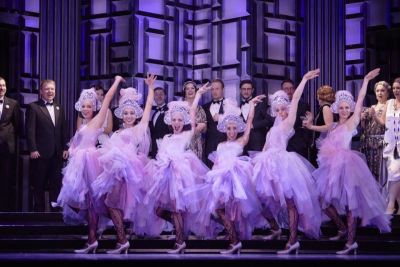 Andrew Hallsworth: I’ve always been interested in the creative process - making up dances, choreographing my sisters, school friends - but not until I was cast in 42nd Street in 1989 at Her Majesty’s Theatre in Sydney did I realise how much I wanted to be in musicals. How to build a musical up from scratch intrigued me; everyone had their part and needed to work together to get the curtain up. Meeting my mentor Ross Coleman changed my life. Ross was the first Australian choreographer I worked with that made me really ‘feel’ - it was incredible. He was all about instinct, trust, rawness, sexual energy and that ‘dancing’ was so dull if it wasn’t connected to acting and story - I loved that SO much. Ross Coleman was my epiphany.
Andrew Hallsworth: I’ve always been interested in the creative process - making up dances, choreographing my sisters, school friends - but not until I was cast in 42nd Street in 1989 at Her Majesty’s Theatre in Sydney did I realise how much I wanted to be in musicals. How to build a musical up from scratch intrigued me; everyone had their part and needed to work together to get the curtain up. Meeting my mentor Ross Coleman changed my life. Ross was the first Australian choreographer I worked with that made me really ‘feel’ - it was incredible. He was all about instinct, trust, rawness, sexual energy and that ‘dancing’ was so dull if it wasn’t connected to acting and story - I loved that SO much. Ross Coleman was my epiphany.
Kelley Abbey: Ross Coleman! I was his assistant for many years. Ross was incredibly inspiring and a great mentor.
It was certainly an epiphany for Stephen Page.
Stephen Page: I was about sixteen and in Arnhem Land visiting my people, learning about tradition, because urban Aboriginals can lose the connection if they don’t nurture it. I remember we went to a corroboree. I’d been sunbaking and was shedding several layers of skin from sunburn and I was dressed just in daggy shorts. We all sat round in a circle in this clearing that was lit just by the headlights of all the utes. The men dancing cast giant shadows on the trees, like they were part of them. And this one dancer, a boy about the same age as me, was doing a Brolga dance, and he came towards me, his arms outstretched like wings, and he invited me to dance with him. It was electric. I felt the Brolga calling me and I got up and I danced with him, and I knew it was where I belonged. I never doubted that it was my path from that moment.
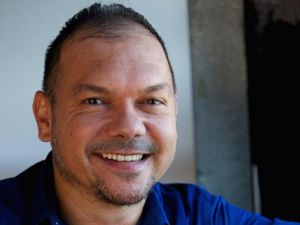
What was the first show you choreographed and was it all that you hoped? Did you achieve your vision?
Michael Ralph:I was still in High School and it was Fame, which Kelly choreographed here.
Kelley Abbey: Fame was my first full length show as a choreographer.
Michael Ralph: I have choreographed shows that were originally choreographed by Kelly and Andrew and Ross Coleman - Fame, Dusty and The Boy from Oz. But this was at Otumoetai College in Tauranga and I was 17 years old. My drama teacher cast me in the lead role and then asked me to choreograph. I collected video clips and edited together all of the dance numbers I loved from the 1980s, like my own personal YouTube. I would say I was working from instinct without any vision. That came later.
Stephen Page: I was still studying at NAISDA and we had to choreograph something that was relevant to Indigenous culture for a showcase. I remember I used a track by the Warumpi Band - a rock and roll piece and very political. Some of the dancers played schoolkids, one was the Principal and it was pretty anarchic but yes, it was my vision. After we presented it the teacher was very quiet and disappeared and told me to wait. Then she came back with the other teachers and told me to do it again and I was thinking, ‘I’m in trouble. They hate it. I’m going to get kicked out.” But they loved it and I knew to always trust my instincts.
Kelly Abbey: It wasn’t easy for me because I was playing the lead role in Fame as well.I was the ‘chair’ in rehearsals and created around the chair, and kept moving the chair around as a marker for where I would be standing. I learnt the role towards the end of rehearsal. It was hard, as the choreographer, to not be in the audience on opening night to see how the show went.
Andrew Hallsworth: Leader of the Pack: The Ellie Greenwich Musical. Do we ever completely achieve our vision, no, our minds are too wild with ideas compared to what can be achieved on stage - I’m still learning all these years later.
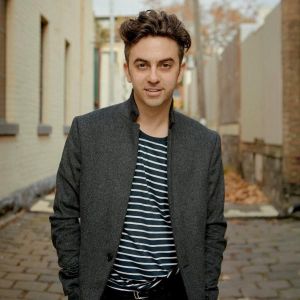
Graeme Murphy: I knew I was never going to be a premier danseur with the Australian Ballet. There was something darker inside of me and I wasn’t sure that anyone could choreograph me and get it out. So I had to get it out myself – I had to stretch my boundaries in a way that no-one else would – especially in a classical company. Then I found a muse – in Janet Vernon – and seeing her dance my steps, pure inspiration. But what I created was so far outside what was expected and the reaction from the audience was mixed. I remember Dame Peggy Van Pragh saying to me, “Graeme, you DID mean for the audience to laugh, didn’t you?” But I trusted I was on the right track.
Stephen Page: My brother Russell was my muse – what a dancer. He and my brother David. We shared our visions.
All of the choreographers agreed that the best choreography played to the dancers’ strengths and Graeme Murphy never pre-conceives any ideas until he sees the skills of the dancers involved. All have choreographed sequences they couldn’t do themselves. Kelly Abbey is responsible for break-dancing routines “I can’t break to save myself, but I understand the movement.”
I asked why there are so few acclaimed female choreographers in Australia compared to the USA. I’ll let Kelley answer.
Kelley Abbey: Is it a man’s world? Yes, sometimes it might be, although it hasn’t stopped me from moving forward in it. I do know that my masculine side is very alive in fighting the obstacles you hit negotiating your way through the creative process of putting on a show in TV, film or theatre. You’re also expected to be a mother and carer for your family. You need to have loads of support and be financially secure. Maybe this is part of the reason. I’d love to work on a show with a full female creative team. Imagine how nurturing that would be, and how quickly we would get it done with a team full of multi taskers.
Finally, the last word on dance goes to Stephen Page.
Dance should never be clinical and only about technique; then it’s like moving ice around. Every dance is a creative story. We’re all, audience included, going to be rejuvenated and grow through it. Otherwise, why get out of bed?
Images: Kelley Abbey, Graeme Murphy, Graeme Murphy's production of The Merry Widow, Stephen Page and Michael Ralph.
Subscribe to our E-Newsletter, buy our latest print edition or find a Performing Arts book at Book Nook.

